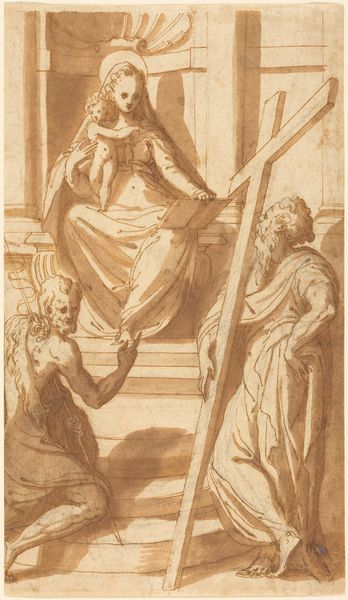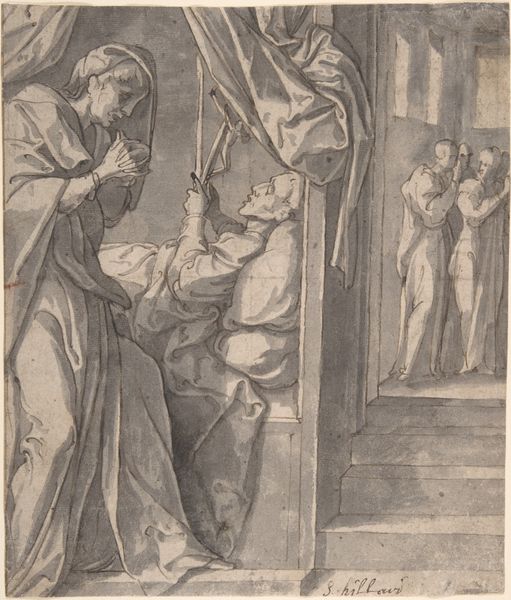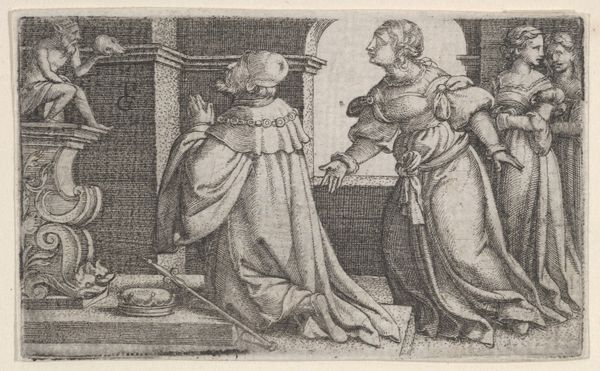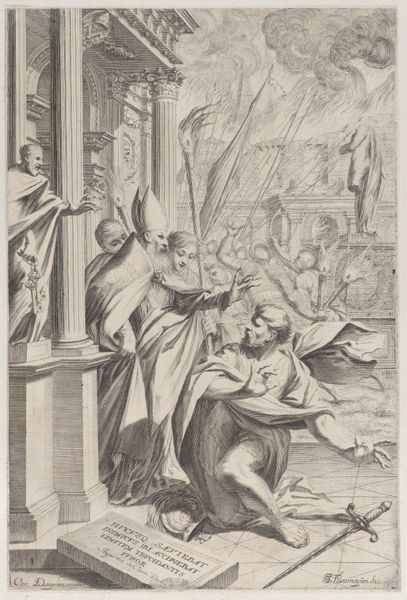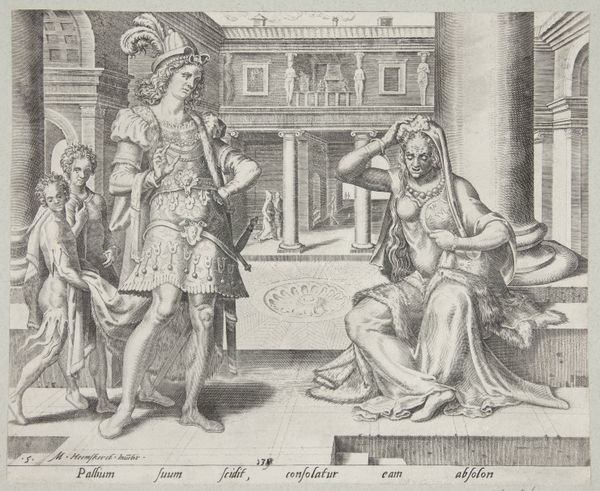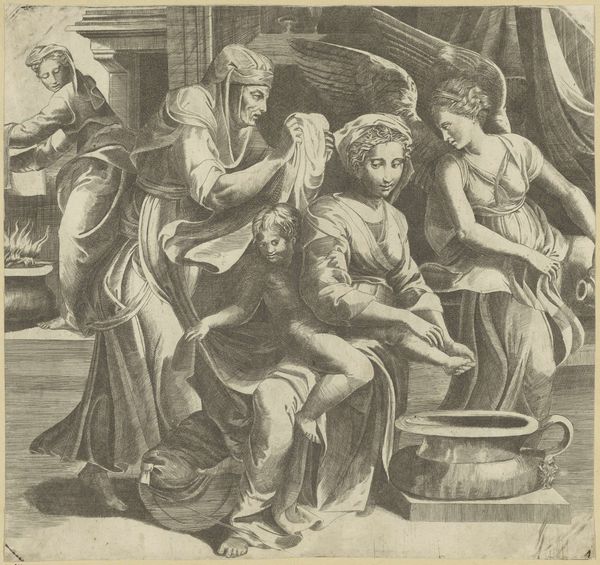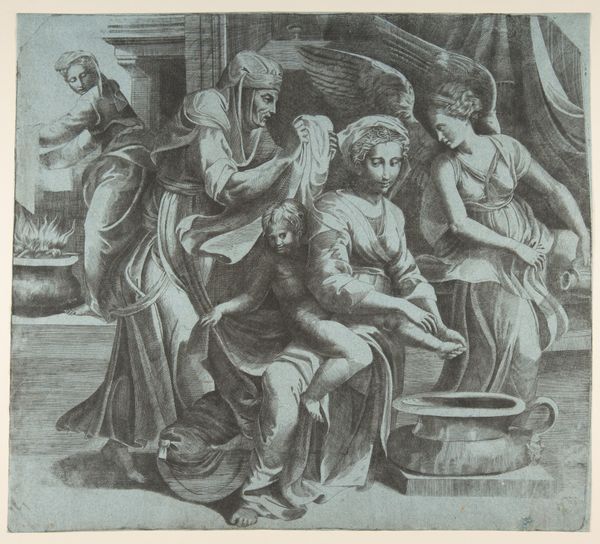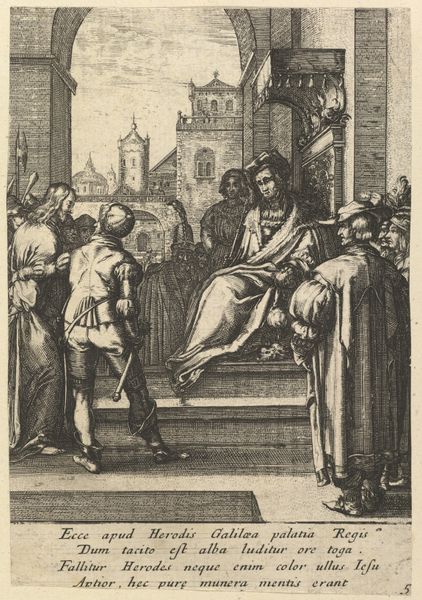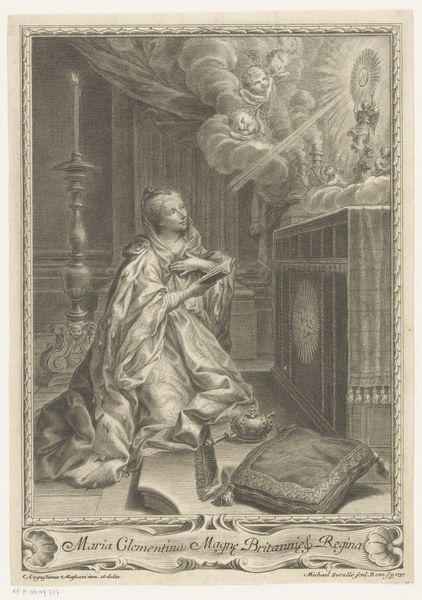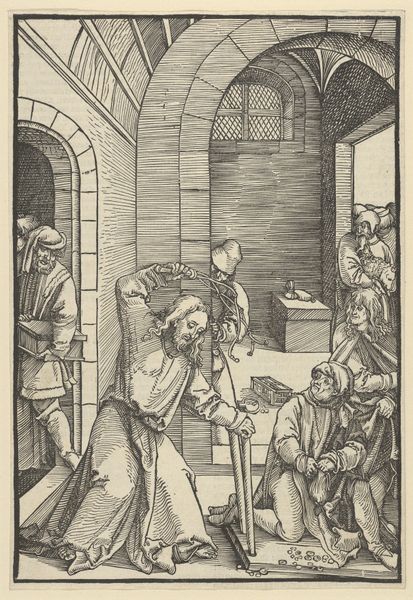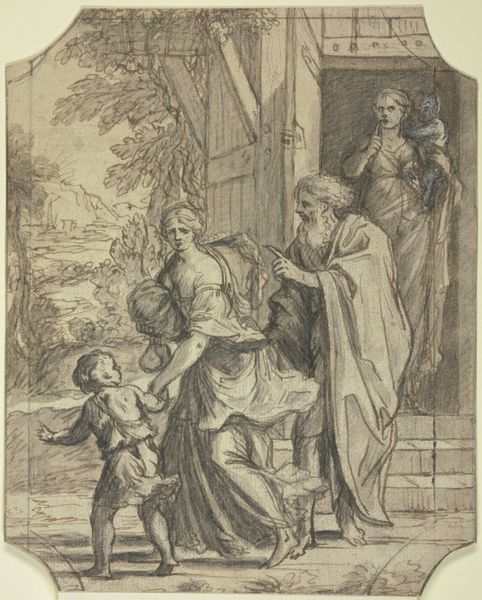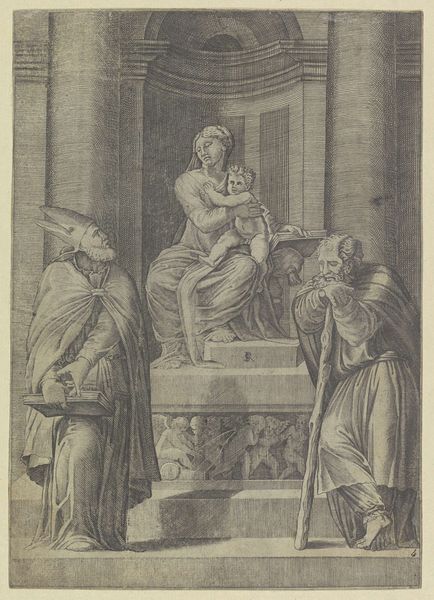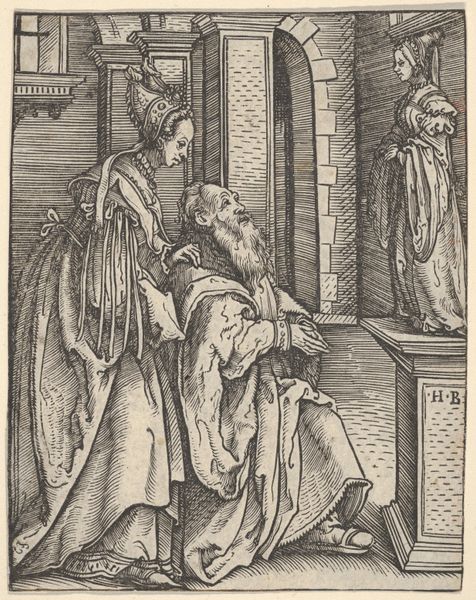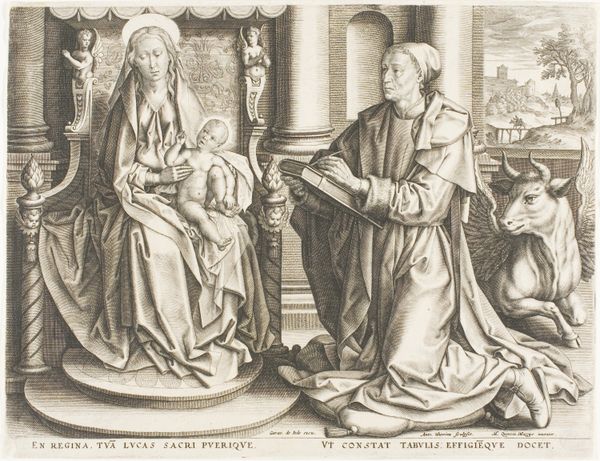
painting, oil-paint
#
narrative-art
#
baroque
#
painting
#
oil-paint
#
painted
#
figuration
#
oil painting
#
history-painting
#
charcoal
Dimensions: height 95 cm, width 293 cm, depth 6 cm
Copyright: Rijks Museum: Open Domain
Barent Fabritius painted *The Pharisee and the Publican* in the mid-17th century using oil on canvas, a material synonymous with the Dutch Golden Age. Fabritius skillfully manipulates oil paint, building layers to create depth and texture. The figures are rendered with a certain realism, yet the architectural space is somewhat dreamlike. This contrast highlights the painting’s moral lesson: the performative piety of the Pharisee versus the sincere humility of the Publican. Fabritius, like many artists of his time, would have relied on apprentices and workshop assistants for tasks like grinding pigments and preparing canvases. This division of labor mirrors the emerging capitalist structures of the Dutch Republic, where specialized skills and mass production were transforming society. By examining the materials and methods of *The Pharisee and the Publican*, we gain insight into not only Fabritius’ artistic practice, but also the social and economic context in which he worked. This reveals how art production was intertwined with broader historical forces.
Comments
No comments
Be the first to comment and join the conversation on the ultimate creative platform.
